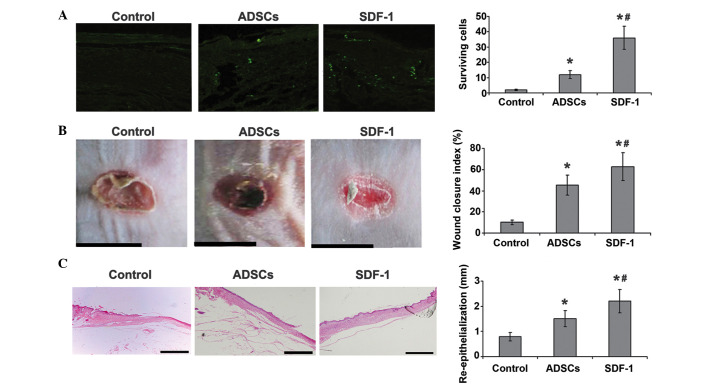Figure 4.
SDF-1 promotes ADSC survival and improves chronic wound healing in vivo. (A) ADSCs marked with 5-BrdU were injected into the chronic wounds; green fluorescence indicates 5-BrdU-labeled ADSCs nuclei. Immunofluorescence staining shows that only a few cells survived in the wound bed 7 days after transplantation in the ADSC group. The number of surviving cells significantly increased in the SDF-1-treated group. (B) Gross appearance of the skin wounds 10 days after treatment. In the SDF-1 group, wound areas were smaller, and the wound closure index was superior to that in the ASDC and control groups. (C) Histological results. H&E staining of the wounds shows that SDF-treated ADSCs promote chronic wound repair, increase dermal collagen levels and the numbers of fibroblasts and capillaries, and result in an re-epithelization length superior to that in the ASDC and control groups. *P<0.05 vs. the control group; #P<0.05 vs. the ADSC group. SDF-1, stromal cell-derived factor-1; ADSC, adipose tissue-derived stem cell; 5-BrdU, 5-bromo-2′-deoxyuridine.

